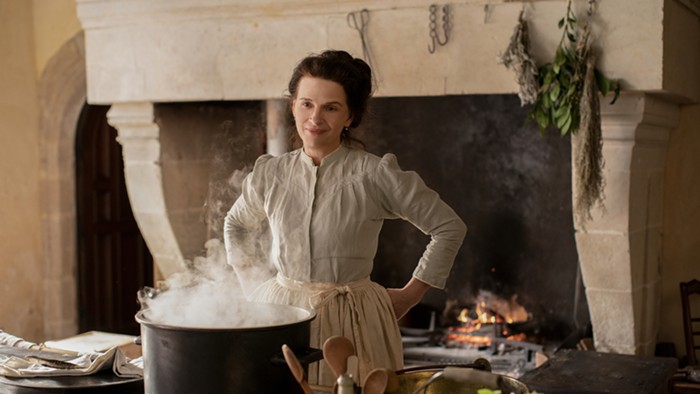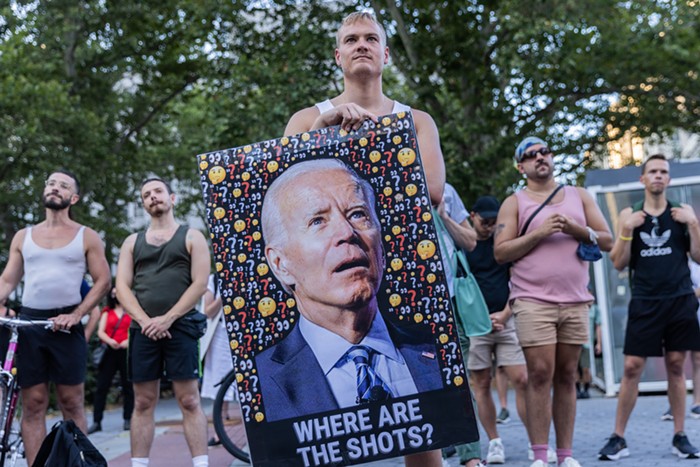Amy Winehouse died, and we all just watched. If there's one takeaway from the new documentary Amy, it's that our consumption of media related to her addiction played an active role in her death. Directed by Asif Kapadia and produced by James Gay-Rees—the same team responsible for the 2010 documentary Senna (also about a famous person's death)—the film successfully demystifies the singer's membership in the infamous "27 Club." Throughout the film it becomes clear that Winehouse's death was avoidable, but certain parties always seemed to circumvent her requests for help during a relapse. A large portion of the blame is placed on the shoulders of Winehouse's parents, particularly those of her father, Mitch Winehouse, who left the family to marry his mistress when Amy was 10 years old. (Shortly afterward, she began to struggle with bulimia and continued to do so until she died.)
Although Kapadia began the project with the blessing of both parents, they've since disowned the film. (Their spokesperson told the Guardian, "It is both misleading and contains some basic untruths.") But multiple interviews with friends—including Winehouse's first manager, Nick Shymansky, her two childhood girlfriends Juliette Ashby and Lauren Gilbert, and her drug counselor Chip Somers—recall times when they begged both her parents and her management to keep Winehouse from touring (even going so far as to steal her passport), only to be told the star had gigs to play and money to make.
Janis and Mitch Winehouse both appear defensive in the film, quick to cite their daughter's independent spirit and stubbornness. In that same Guardian interview, Mitch blames Amy's subsequent manager, Raye Cosbert, for facilitating her extensive travels. Toward the end of the film, we see footage of Amy Winehouse's final concert, on June 18, 2011—only a month before her death—in Belgrade, Serbia. She appears intoxicated and refuses to sing, and the audience finally boos her offstage. The press was quick to turn it into a viral spectacle. But it makes a difference to hear her friends recount how Winehouse was bundled onto a plane by Cosbert while passed out after an alcohol binge. (She'd apparently told him multiple times to cancel the show.) For his part, Cosbert disowns any responsibility for Winehouse's addiction, calling it "the responsibility of the family."
But the assignment of blame is not this documentary's most important function. Not by a long shot.
The recollections of Winehouse's friends—and the footage of young, pre-beehive Amy—are the film's real center. They overshadow any commentary from her ever-creepy ex-husband Blake Fielder-Civil (who admits on camera that he is responsible for her first-time use of both crack cocaine and heroin). His presence is necessary, but, in a refreshing change of pace for Winehouse-related stories, their relationship does not take center stage. A more lasting impression comes from home videos of Winehouse—young and fresh-faced and joking with Shymansky—on the promotional tour for her first album, Frank. The clips and pictures provided by Ashby and Gilbert of Winehouse in high school—and their continued dialogue about her jokes and pranks—help piece together the sense of loss felt by the people who knew and loved her.
Once this light has been cast on Winehouse's personality, it's easier to understand the need to hold someone accountable for her death. Yes, she had enormous talent. But even without the soulful voice, this was a special person. She's owed more than the public perceptions of her sordid demise.
Amy presents two truly chilling moments about Winehouse's addiction and its public perception. When Shymansky addresses her hit single "Rehab," he recalls how they staged an intervention for Winehouse after her initial breakup with Fielder-Civil. It obviously did not play out the way they'd intended. Shymansky cites this as a defining moment, a distinct point where Winehouse's life could have taken a different turn. He says, "The world wouldn't have gotten Back to Black, but she would have had a chance to deal with her issues before the world wanted a piece of her." It's the origin story of the album and the beginning of the singer's downfall rolled into one sad memory. The other occurs the night of the 2008 Grammy Awards, at which Winehouse won record of the year for "Rehab." We see her happy and smiling, enamored with her idol Tony Bennett's announcement of her victory. But in a voice-over, her friend Juliette Ashby recalls how the singer pulled her to the side of the stage and said words that cut straight to the fragility of sobriety and the thievery of addiction: "Jules, this is so boring without drugs."
The truly alarming footage is of the UK paparazzi that constantly surrounded Winehouse once she was a star. Swarms of photographers mobbed the singer whenever she went anywhere—screaming, mocking, and cajoling her to pose for the camera under the continuous glare of flashbulbs. We see the pandemonium that went into each tabloid photo and every mocking editorial. The film highlights our inability to treat addicts as humans with a disease. Instead, we cast them as lowlifes and failures. If they're famous? Even better! We prop them up, engage in ritualistic schadenfreude, and publicly humiliate them. While some members of her inner circle might have treated her like a cash cow, we treated Amy Winehouse—a person clearly in desperate need of help—like our own personal entertainment.
As I left the theater, all I could think of was all the Amy Winehouse costumes I saw people wearing on Halloween of 2007. Photos of the singer following a domestic-disturbance incident between her and then-husband had spread all over the internet in August. Two months later, smudged winged eyeliner, cheap beehive wigs, torn white tank tops spattered with fake blood, and poorly drawn "tattoos" scrawled down biceps were all the rage. There was at least one Amy Winehouse at every party I attended.
And I laughed. ![]()



















